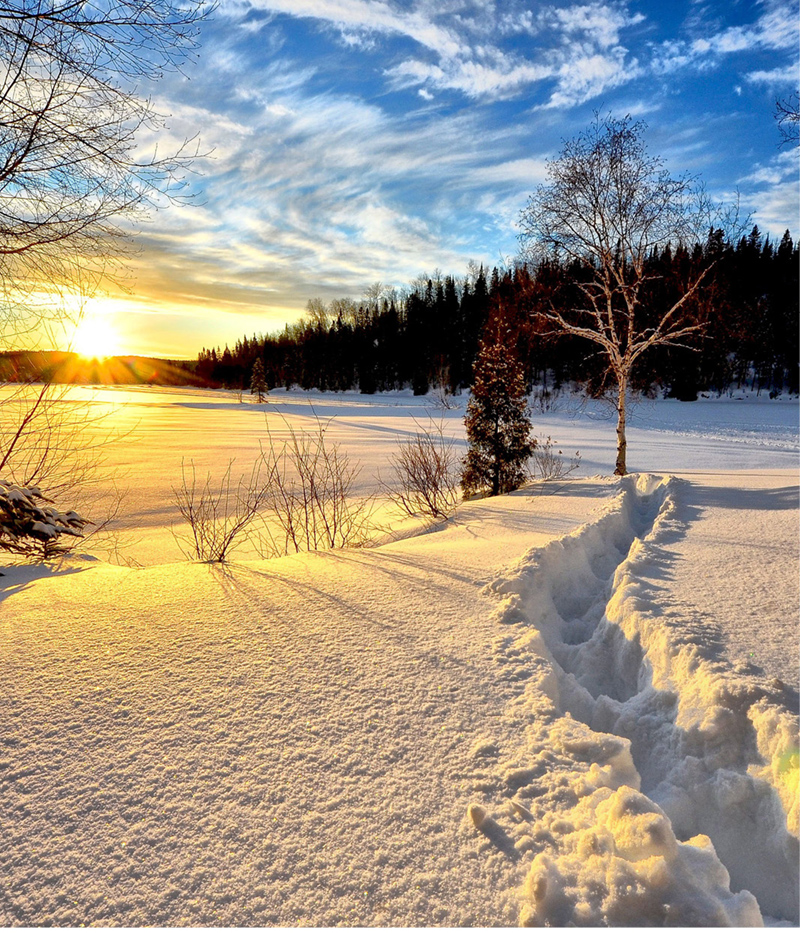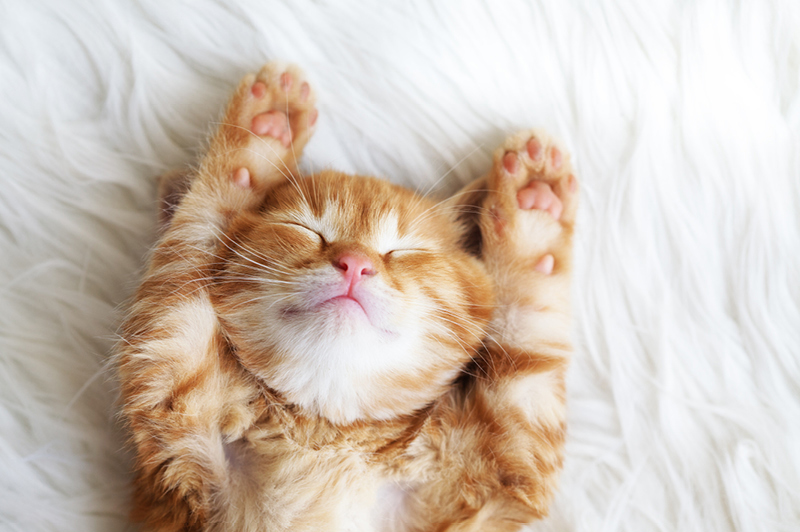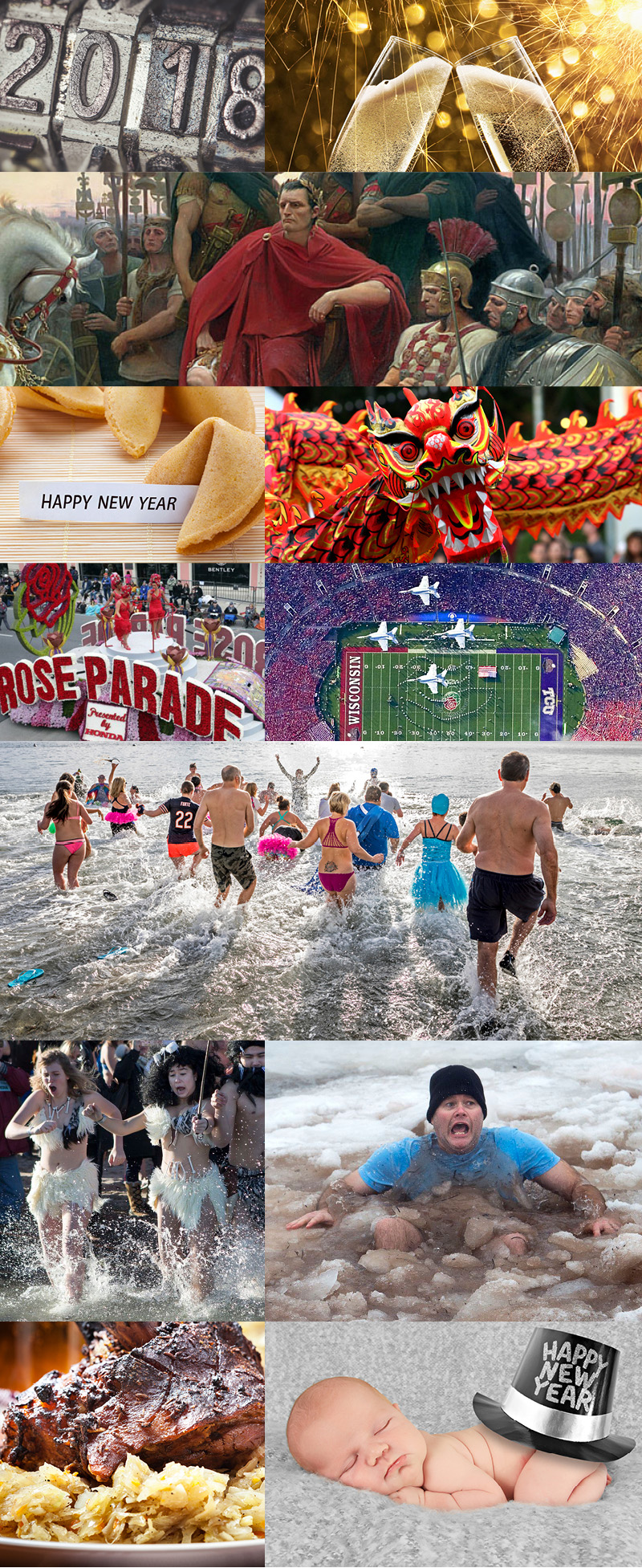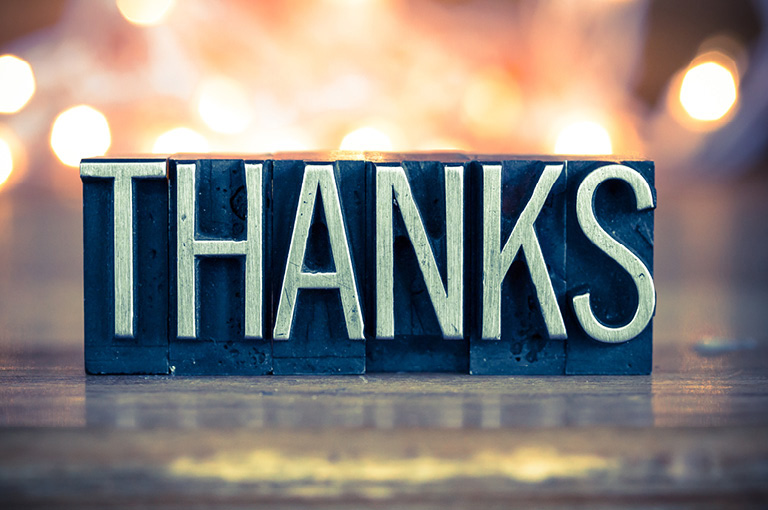
The future ain’t what it used to be… (top to bottom) We’ll have ape chauffeurs. We’ll live in flying houses. We’ll have personal helicopters. We will have telepathy. We’ll finally make it to Mars. There will be “nanobots” capable of entering the bloodstream to “feed” cells. The new and improved Kowalski Heat Treating door greeter!
With the New Year approaching, it’s hard to imagine that we’re almost living in the year 2020. 2019 seemed ok to me, but 2020 is hard to get my head around – (has it been 20 years since we worried about the computers flipping to 2000??) Back then I vividly recall going to a New Year’s Eve party at the local lodge with a bunch of friends along with their kids. We all were looking forward to what crazy things would be happening or not due to the new millennium! I remember one of the Dad’s being a DJ and the kids all thinking is was so cool to be able to stay up late with their parents. Now fast forward 20 years, though we’ve seen plenty of impressive technological advances, like artificial intelligence and phones that unlock by scanning our faces, it’s not quite the world of flying cars and robot butlers people once imagined we’d be living in by now. In fact, decades ago, predictions about the futuristic and revolutionary changes we’d see in this far-off sounding year were quite lofty. Want a good laugh? Here are crazy 23 predictions about the year 2020 that at some point in time, people really expected to happen. Enjoy reading these while diving deeper to see what actually has happened and thanks to Bob Larkin and bestliviningonline.com for the info.
1 – Human feet will become just one big toe.
So, what’s going to happen to our feet—or, more specifically, our toes—in 2020? In a lecture at the Royal College of Surgeons of England in 1911, a surgeon by the name of Richard Clement Lucas made a curious prediction: that the “useless outer toes” will become used less and less, so that “man might become a one-toed race.” This Little Piggy would get a whole lot shorter!
2 – We’ll have ape chauffeurs.
In 1994, the RAND Corporation, a global think tank that’s contributed to the space program and the development of the internet, said they expected us to have animal employees by the year 2020. “The RAND panel mentioned that by the year 2020 it may be possible to breed intelligent species of animals, such as apes, that will be capable of performing manual labor,” Glenn T. Seaborg wrote of the corporation’s prediction in his book Scientist Speaks Out. “During the 21st century, those houses that don’t have a robot in the broom closet could have a live-in ape to do the cleaning and gardening chores. Also, the use of well-trained apes as family chauffeurs might decrease the number of automobile accidents.” Yikes, who’s gonna tell them?
3 – We’ll live in flying houses.
Inventor, science writer, and futurist Arthur C. Clarke—who co-wrote the screenplay for 2001: A Space Odyssey—believed that the boring houses of 1966 would be radically different by the time we reached the 21st century, according to Inverse. Evidently, the houses of the future would have nothing keeping them on the ground and they would be able to move to anywhere on earth on a whim. Oh, and it wouldn’t just be one home that would be able to relocate without the owner even needing to get out of bed and put on pants. “Whole communities may migrate south in the winter, or move to new lands whenever they feel the need for a change of scenery,” Clarke promised. Up 2, anyone?
4 – And our houses will be cleaned by hoses.
The New York Times’ longtime science editor Waldemar Kaempffert, who worked for the paper from the 1920s through the 1950s, had lots of opinions about how different the world would be by the 21st century. In a 1950 Popular Mechanicsarticle, titled “Miracles You’ll See in the Next 50 Years,” he predicted that by the 21st century, all you’ll have to do to get your house clean is “simply turn the hose on everything.” That’s because Kaempffert imagined furniture would be made of synthetic fabric or waterproof plastic. “After the water has run down a drain in the middle of the floor (later concealed by a rug of synthetic fiber),” all you’d have to do is “turn on a blast of hot air” to dry everything. What about not-so-resilient material, you ask? Just “throw soiled ‘linen’ into the incarcerator!”
5 – We’ll eat candy made of underwear.
In the same Popular Mechanics article, Kaempffert predicted that all food would be delivered to our homes in the form of frozen bricks by the 21st century. “Cooking as an art is only a memory in the minds of old people,” he wrote. “A few die-hards still broil a chicken or roast a leg of lamb, but the experts have developed ways of deep-freezing partially baked cuts of meat.” And, thanks to advances in culinary technology, Kaempffert predicted it would even be possible to take ordinary objects like old table linens and “rayon underwear” and bring them to “chemical factories to be converted into candy.” No thanks!
6 – We’ll have personal helicopters.
Forget jetpacks and flying cars. Popular Mechanics was pretty sure back in 1951 that every family in 21st century would have at least one helicopter in their garage. “This simple, practical, foolproof personal helicopter coupe is big enough to carry two people and small enough to land on your lawn,” they explained. “It has no carburetor to ice up, no ignition system to fall apart or misfire: instead, quiet, efficient ramjets keep the rotors moving, burning any kind of fuel from dime-a-gallon stove oil or kerosene up to aviation gasoline.” Yes, but then, we’d imagine, your teenage son would ask to borrow the chopper, and you’d wake up the next day to discover your helicopter stuck in a tree. It’s always something!
7 – C, X, and Q will not be part of the alphabet.
When you’re curious about the future of language, you probably should ask someone other than an engineer about it. And yet, that’s what Ladies’ Home Journal did in 1900, asking John Elfreth Watkins Jr., the curator of mechanical technology at the Smithsonian Institution, for his educated guesses about the 21st century. The man of science had no love for what he considered extraneous letters, and he boldly predicted that by the 2000s, “there will be no C, X, or Q in our everyday alphabet. They will be abandoned because unnecessary.” Instead, Watkins wrote, we’d be spelling mostly by sound and would only communicate with “condensed words expressing condensed ideas.” So, in 2020, we may say to our friends, “Me happy good, hi!”
8 – We will have both telepathy and teleportation.
Michael J. O’Farrell, founder of The Mobile Institute, has been an expert in the technology industry since 1985. But even the experts can make mistakes. In the 2014 book Shift 2020, O’Farrell predicted that 2020 would be the dawn of the “nanomobility era.” “In the pending nanomobility era, I predict telepathy and teleportation will become possible by the year 2020—with both commonplace by 2040,” he said. I think this already happened – Jackie already knows just about everything I’m thinking. Beam me up Scotty.
9 – All roads will become tubes.
If you’re sick of asphalt roads and all the potholes that come with them, then you’ll wish Popular Mechanics was right about this prediction for the 21st century. In a 1957 article, the magazine predicted that every road and street in America will be “replaced by a network of pneumatic tubes,” and your car would only need enough power to get from your home to the nearest tube. Then, by the calculations of a Honeywell engineer, “they will be pneumatically powered to any desired destination.”
10 – Nobody will work and everybody will be rich.
In 1966, Time magazine reported that the 21st century would be a pretty awesome economic era for just about everybody. In an essay called “The Futurists,” they predicted that “machines will be producing so much that everyone in the U.S. will, in effect, be independently wealthy.” Without even lifting a finger, the average non-working family could expect to earn an average salary of between $30,000 and $40,000, according to Time. That’s in 1966 dollars, mind you; in 2020, that’d be about $300,000—for doing nothing.
11 – Mail will be sent via rocket.
As out there as it sounds, mail delivery via missile was successfully attempted in 1959. That year, a Navy submarine—the U.S.S. Barbero—sent 3,000 letters, all addressed to political figures like President Dwight D. Eisenhower, using only a rocket. The nuclear warhead was taken out and replaced with mail containers, and the missile was launched towards the Naval Auxiliary Air Station. The mail was successfully delivered, and Postmaster General Arthur E. Summerfield was so excited by the “historic significance” of mail delivery via instruments of war that he predicted it would become commonplace by the next century. “Mail will be delivered within hours from New York to California, to Britain, to India, or Australia by guided missiles,” he said. “We stand on the threshold of rocket mail.” Though we never got rocket mail, we did get something better: email.
12 – We’ll finally make it to Mars.
We’ve been dreaming of putting humans on Mars for as long as we’ve known the red planet existed. However, it’s only recently that the venture has started to feel even remotely realistic. And yet, in 1997, Wired magazine’s Peter Schwartzand Peter Leyden picked the year 2020 as the time when “humans arrive on Mars.” “The four astronauts touch down and beam their images back to the 11 billion people sharing in the moment. The expedition is a joint effort supported by virtually all nations on the planet, the culmination of a decade and a half of intense focus on a common goal.” Ah, sounds nice, doesn’t it? NASA projects that the earliest we could get a human on the surface of Mars is 2030, and that’s only if we’re really, really lucky.
13 – Women will all be built like wrestlers.
In 1950, Associated Press writer Dorothy Roe revealed some shocking predictions of what life on earth would be like in the 21st century, according to Smithsonian magazine. Among her more head-scratching forecasts were that the women of tomorrow would be “more than six feet tall” and would “wear a size 11 shoe, have shoulders like a wrestler, and muscles like a truck driver.” Their proportions, Roe wrote, would be perfectly “Amazonian,” all evidently thanks to science providing “a balanced ration of vitamins, proteins, and minerals that will produce maximum bodily efficiency.”
14 – We’ll wear antenna hats and disposable socks.
For a 1939 issue of British Vogue, product designer Gilbert Rhode was asked what he believed people in the 21st century would be wearing—and he had lots of thoughts. He imagined that, by 2020, we would have banished buttons, pockets, collars, and ties, and that men would revolt against shaving. “His hat will be an antenna, snatching radio out of the ether. His socks—disposable. His suit minus tie, collar, and buttons,” Rhode declared. He almost described a modern-day hipster living in Brooklyn, but we suspect even the antenna hat might be pushing it a little too far. Goggle glasses perhaps?
15 – Everything—even baby cradles—will be made out of steel.
Thomas Edison played a role in some of the greatest inventions of all time, from light bulbs to movie cameras. But that doesn’t mean he only had good ideas. Take his vision of the future of steel, for instance: During a 1911 interview with Miami Metropolis, he predicted that “the house of the next century will be furnished from basement to attic with steel.” And according to Edison, the steel obsession wouldn’t end there. “The baby of the 21st century will be rocked in a steel cradle,” he said. “His father will sit in a steel chair at a steel dining table, and his mother’s boudoir will be sumptuously equipped with steel furnishings.” All of this heat treated of course !!
16 – We’ll be able to vote electronically from home.
In the aforementioned 1997 Wired article, Schwartz and Leyden predicted that Americans would be able to partake in “e-voting,” voting in the presidential election from the comfort of their own home. They actually predicated we’d be able to e-vote as early as 2008, but at this point, even the possibility of e-voting in the 2020 election seems a little far-fetched.
17 – Everyone will stop drinking coffee and tea.
In 1937, Nikola Tesla predicted that “within a century, coffee, tea, and tobacco will be no longer in vogue.” “The abolition of stimulants will not come about forcibly,” he wrote. “It will simply be no longer fashionable to poison the system with harmful ingredients.” He’s hopefully right about tobacco, but the coffee and tea? Not just yet.
18 – There will be “blood banks” for teeth.
We already have blood blanks, where life-saving plasma can be donated and used to help patients who need emergency blood. So, what’s next, you might be wondering? Well, in a 1947 issue of Mechanix Illustrated magazine, journalist Lester David promised that in the future, we’d have “tooth banks,” too. “Picture the possibilities,” David wrote in the story, aptly titled, “How About Tooth Banks?” “Into the junk pile will go all artificial dentures, all bridges, plates, partial plates. All men and women of whatever age will be able to have human teeth imbedded inside their gums until the day they die.” I’m not sure I want someone else’s teeth in my mouth – eeewww!
19 – Everyone will be a vegetarian.
In 1913, Gustav Bischoff, former president of the American Meat Packers Association, predicted that humans’ diets would consist of mostly vegetables as the years went on. Because of a shortage of meat, he told The New York Times, even the wealthiest people in the future would be vegetarians. With the new meatless products, we’re close.
20 – This prediction comes from just 15 years ago and it was made by futurist and computer scientist Ray Kurzweil. He wrote in his 2005 book The Singularity Is Near: When Humans Transcend Biology that by the 2020s, there will be “nanobots” capable of entering the bloodstream to “feed” cells and extract waste. As a result, they’ll render the mode of food consumption as we know it obsolete. A bold prediction for just 15 years into the future, don’t you think?
21- We’ll have robots as therapists.
Robots are the typical prediction for the future—and technically, we do sort of have robots now. But global trends expert Ariane Van de Ven had some bigger ideas for 2020. She explained in the aforementioned book Shift 2020 that she believed “there will be more robots used as therapists, companions, assistants, and even friends to help people in their everyday,” according to The Next Web. Yeah… not quite.
22 – Vacuums will be nuclear-powered.
Alex Lewyt, former president of Lewyt Vacuum Company, obviously wanted the world to be excited about vacuum cleaners. But when he predicted in 1955 that “nuclear-powered vacuum cleaners” would become a reality in the future, he maybe wasn’t making the most convincing sales pitch. If the choice were between having dirty floors or plugging in a mini-Chernobyl-waiting-to-happen, we’d probably stick with the crumbs and dust bunnies.
23 – There will be no need for futurists to predict the future.
In the 1900s and earlier in the 2000s, many futurists made their predictions as to how 2020 would look. But Dave Evans, the chief futurist for Cisco Visual Networking, actually predicted that he’d be out of a job by this time because, he forecasted, everyone would be able to predict the future themselves. “By 2020, predicting the future will be commonplace for the average person,” he told Mashable in 2012. “We are amassing unprecedented amounts of data… New image and video analysis algorithms and tools will unlock this rich source of data, creating unprecedented insight. Cloud-based tools will allow anyone to mine this data and perform what-if analysis, even using it to predict the future.”
24 – Steve’s Bonus Prediction!
The Cleveland Browns Win the Superbowl Before 2030!! I refuse to put a date on this, but like all of the predictions above – it could happen. Just one would be fine with me.











